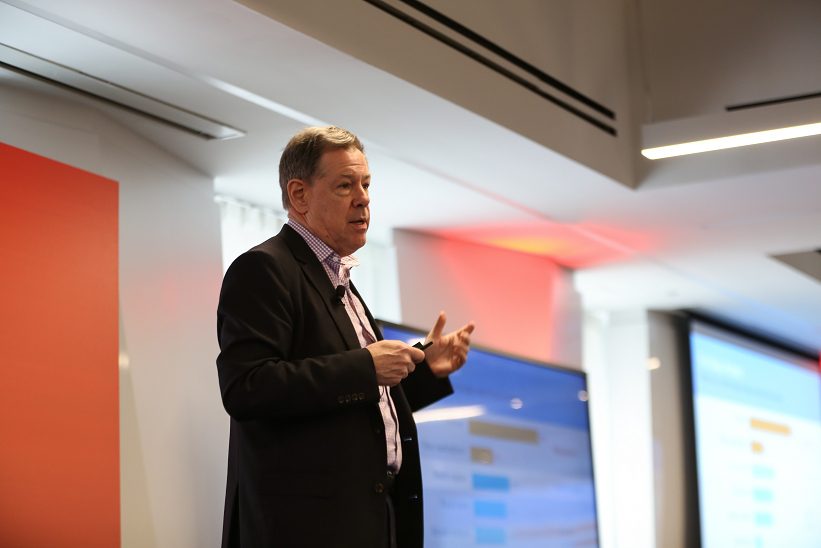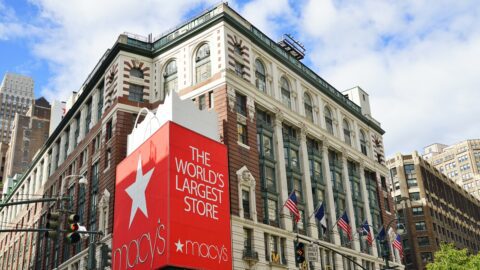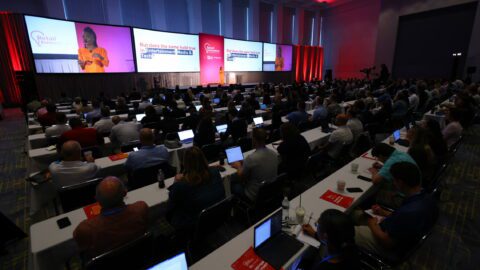Although physical stores aren’t going away any time soon, consolidation within brick-and-mortar retailers is accelerating. This means struggling companies only have two choices: stand out or get knocked out. In a 2018 Retail Innovation Conference session: A Really Bad Time To Be Boring: Reinventing Retail In The Age Of Amazon, Steven Dennis, President of SageBerry Consulting, noted that physical retailers should focus on one of two directions, in order to prevent themselves from falling into the abyss of “boring” retailers.
They can pivot toward convenience, great price or a vast assortment, or they can build experience-focused stores. It’s the inability to choose a side that prevents brick-and-mortar brands from standing out and becoming remarkable in the eyes of the shopper.
“The challenge for a lot of retailers is they end up straddling the middle, and end up not really good at anything,” said Dennis during the presentation. “Or they try to out-Amazon Amazon, and I think that is a very dangerous strategy for almost everyone.”
Understanding where this challenge originates is important. Dennis noted that nearly 60% of retail stores are influenced by digital channels, according to Deloitte, even though e-Commerce represents approximately 10% of total retail sales.Dennis has noted in a prior Q&A with Retail TouchPoints that since digital drives physical and vice versa, retailers must undergo an in-depth analysis of the various customer journeys and understand where to eliminate friction points.
Dennis presented “Seven Steps to Reimagined/Remarkable Retail” as advice for retailers on being relevant in the moments that matter. Non-boring retailers share the seven characteristics:
- Harmonized – One brand, many channels. Silos belong on farms. Dennis highlighted Nordstrom and Best Buy as retailers that have been successful at being channel-agnostic, not only improving their digital experiences but thinking about their stores as assets.
- Digitized across the enterprise.
- Personalized and curated – “No customer wants to be average,” Dennis said. “More importantly, there’s no reason for the customer to accept being average. For the most part, just about any customer can have just about anything they want from anything in the world at any point they want it.” Dennis also focused heavily on AI-driven product customization.
- Localized – 82% of smartphone users use a search engine when looking for a local business, and there’s been a 2X increase in “near me” search interest in the past year.
- Socialized – More consumers use social media and resources such as Travelocity and Yelp before they visit somewhere or plan a dinner, so retailers must home in on data from consumers and peers in the same way.
- Amplified – “We’re drowning in a sea of sameness,” Dennis said. “You can go into a lot of department stores and specialty stores and you’d be hard pressed to tell which brand you’re in based on the experience you have.” Dennis highlighted examples of “amplified” store experiences, such as the Neiman Marcus memory mirror; the b8ta stores that showcase tech products and are focused on discovery, not purchases; and Eataly locations, which marry product and food.
- Radicalized – Most retailers got themselves into trouble because they refused to take risks. Dennis encouraged retailers to “test and learn, and embrace a culture of experimentation.”
Watch a video of the session here.













